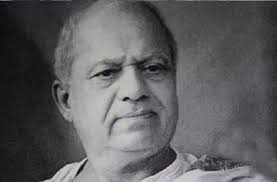 “While the film Life of Christ was rolling past before my eyes, I was mentally visualizing the gods, Shri Krishna, Shri Ramachandra their Gokul and Ayodhya. I was gripped by a strange spell. I bought another ticket and saw the film again. This time I felt my imagination taking shape in the screen. Could this really happen? Could we the sons of India, ever be able to see Indian images on the screen. The whole night passed in this mental agony.”
“While the film Life of Christ was rolling past before my eyes, I was mentally visualizing the gods, Shri Krishna, Shri Ramachandra their Gokul and Ayodhya. I was gripped by a strange spell. I bought another ticket and saw the film again. This time I felt my imagination taking shape in the screen. Could this really happen? Could we the sons of India, ever be able to see Indian images on the screen. The whole night passed in this mental agony.”
Popularly known as ‘Father of Indian Cinema’, Dadasaheb Phalke if the man behind the introduction of motion pictures in India. He was born in April 30, 1870 in a Maharashtrian Brahmin family as Dhundiraj Govind Phalke. He was the first to direct India’s first feature film, giving birth to the huge cinema industry today.
Schooled at J.J. School of Art in Mumbai, he had myriad of interests including painting, photography, dramatics, and architecture. He even started a printing business, but it could not sustain for a longer time. Although initially, he pursued a passion for photography, it was a silent French movie “Life of Christ” that motivated him to consider filmmaking. He was mesmerized by the art of developing a film and developed keen interest in it and even went to London to learn the art from filmmaker Cecil Hepworth. After returning, he released his first movie Raja Harishchandra in 1913. Initially, he underwent many hurdles and his family helped in the entire production process. Interestingly, he even learnt magic tricks from a German magician and used trick photography while filming his movies. He watched movies everyday to understand more about the art, which strained his eyes to that extent that he developed cataract and was on the verge of losing his eyesight. However, with timely treatment he could restore his eyesight with the help of spectacles.
The entire movie was produced, directed, written, and distributed by him, marking a beginning of the Indian film industry. He went on release successful movies such as Shri Krishna janma, Lanka Dahan, Satyavan Savitri, and Shakuntala. Later with the advent of sound cinema, Phalke’s popularity received a setback and he announced his retirement after creative differences with partners at the Hindustan Cinema Films Company. His first and last sound film was Gangavataran, after which he spent his last few days at Nashik until his death in 1944.
Honoring his contribution, the Government of India constituted the Dadasaheb Phalke Award for outstanding work in the film industry. A film based on his life, Harishchandranchi Factory was released in 2009, which became a hit and was also submitted as Indian entrant for the Oscars.
Phalke’s struggle to bring motion picture to India set a milestone and the Indian movie industry will remain forever indebted to him for his contribution.
Birth Score – 4/5
Pride Score – 5/5
An super-impressive 9/10 Notable Brahmin Score.